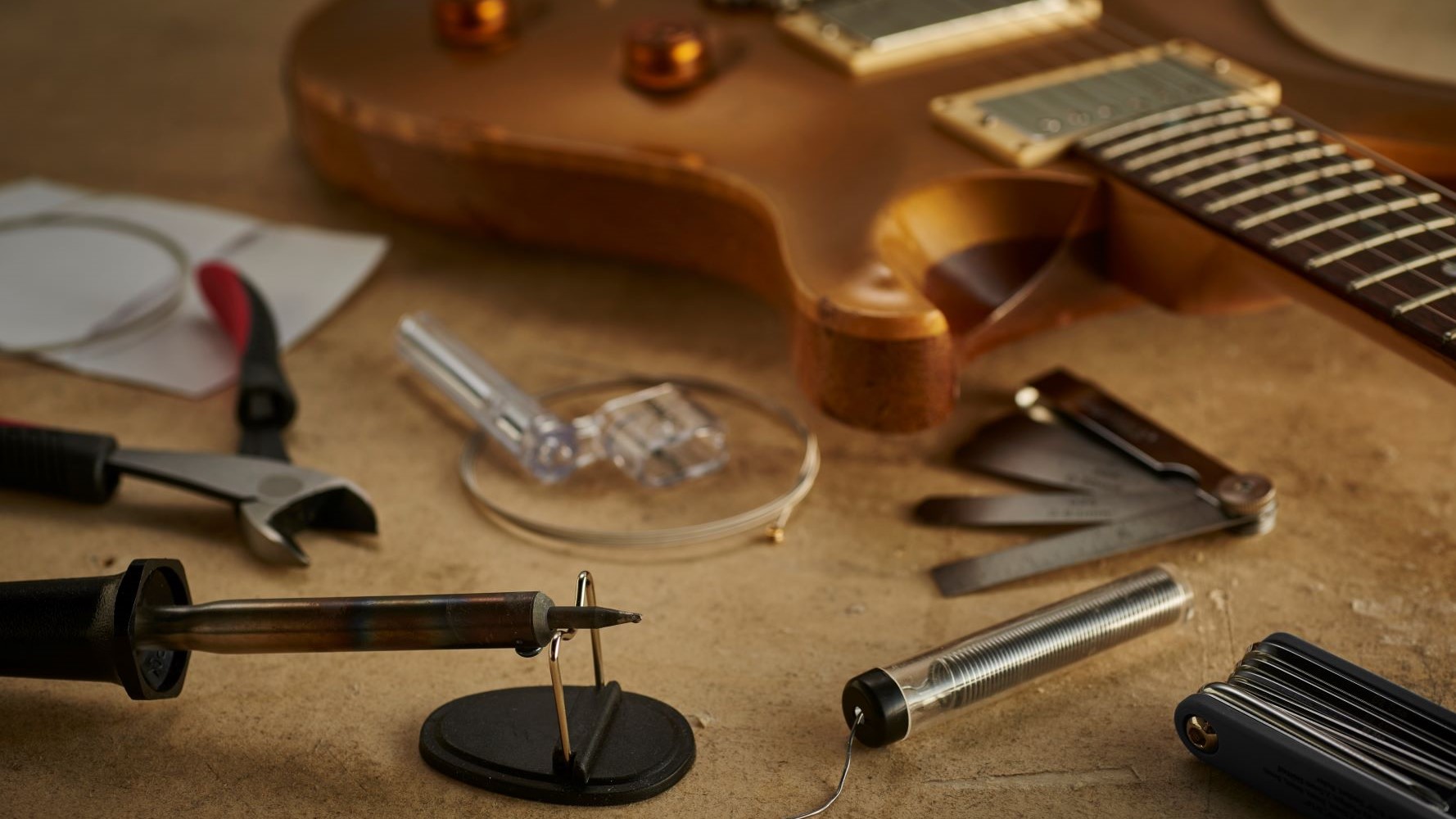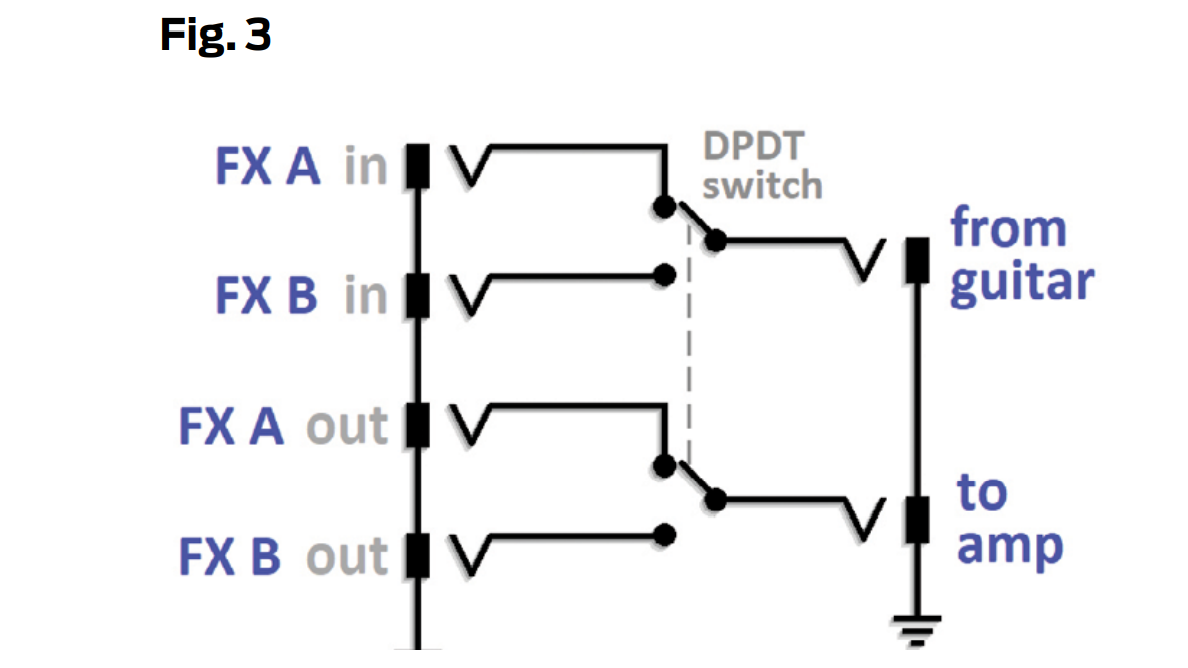How To Build a True Bypass Switch/A-B Switcher
A simple, useful, one-evening project.

This simple project can add true bypassing to mono-in/mono-out effects that use passive switching. But that’s not all! With a little more effort, you can build a universal true-bypass box that works with any mono-in/mono-out effect and does double duty as an A-B effect switcher.

Fig. 1 shows the wiring diagram for retrofitting existing effects that use mechanical, passive switching. You’ll need a double-pole, double-throw (DPDT) footswitch (available from amplifiedparts. com) to replace an existing single-pole, double-throw footswitch.
The diagram shows the DPDT switch’s bottom six terminals in red. To perform the retrofit, unsolder the effect’s hot leads from the input and output jacks. Wire these to the DPDT switch, as shown.
Next, solder wires from the input and output jacks to the DPDT switch poles, making sure that the wire to the input jack switches to the effect input lead, and the wire to the output jack switches to the effect output lead.
Then, short the remaining two switch terminals. Done!

Fig. 2 shows the interior of the A-B Switcher, as built into a plastic enclosure. This circuit provides true bypassing for effects boxes that use electronic switching (that is, where the footswitch triggers a chip or relay that does the switching, or switches connections within the circuit itself).
In addition, it can be used to switch between two effects.
All the latest guitar news, interviews, lessons, reviews, deals and more, direct to your inbox!

Fig. 3 shows the schematic. Patch your electric guitar (or output from a previous effect in an effects chain) to the main in jack, and patch the main out jack to your amp, or the input of the next effect in a chain.
For a true-bypass function, connect the FX A in and FX A out jacks. Patch the FX B in jack to the effect input, and the FX B out jack to the effect output. Switching to FX A provides true bypass.
For A-B switching, instead of connecting the FX A in and out jacks together, patch the FX A in jack to the second effect’s input, and the FX A out jack to the second effect’s output.
